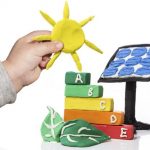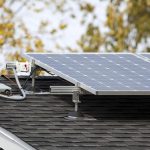The sun rises, the sun sets. What more do you need?
When it comes to harnessing solar power, a little bit more. But you don’t have to go it alone. These 5 factors should be second nature to your solar provider.
Step 1: Comprehensive calculations
There are three elements to consider before choosing solar power.
Tilt is the angle of your roof. While it’s important to understand how the tilt of your roof impacts solar production, keep in mind solar panels accommodate a wide range of tilt.
Azimuth is a fancy word that basically means the direction your roof is facing. For the scientifically curious, Merriam-Webster defines azimuth as “an arc of the horizon measured between a fixed point (as true north) and the vertical circle passing through the center of an object, usually – in astronomy and navigation – clockwise from the north point through 360 degrees.”
Suffice it to say azimuth pinpoints the necessary degree for optimal solar production.
Shading determines how various objects may affect solar production. Some you can control by relocating trees or trimming shrubs. Some you can’t control, such as telephone poles and mountain ranges.
Step 2: Theory to reality
Now it’s time to customize your solar system. This includes the number of panels and where the array will be positioned. Engineers review and approve the design, while electrical and building permits are obtained and the interconnection application is filed with your local utility.
Step 3: On the roof
There will be drilling. There will be bolts. There will be racking, sealants and coverings. Solar modules are not very heavy. The integrity of your roof will be as preserved against the elements as it was before installation — and in some cases, even better.
Step 4: On the ground
Rooftop solar systems require ground work too.
Because of AC/DC, you need an inverter. This is a Thomas Edison thing, not a rock band thing.
Photovoltaic panels produce direct current but your home runs on alternating current. An inverter converts all of that awesome sunshine into what you need to watch your big-screen TV.
A utility net meter keeps track of how much power your solar system is generating as well as how much electricity you’re consuming from the grid. The difference is your net energy. This handy little device can be loads of fun. If you look on sunny days, you just might see it spinning backward.
Step 5: Turning you on
Final inspections are on the radar. This is when everything is verified as up to code and your utility company has approved Permission to Operate (PTO). It’s time to flip the switch and begin saving money. Congratulations! You have been turned on by solar.








Leave A Comment